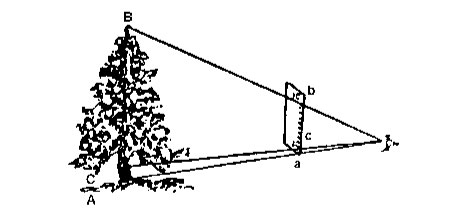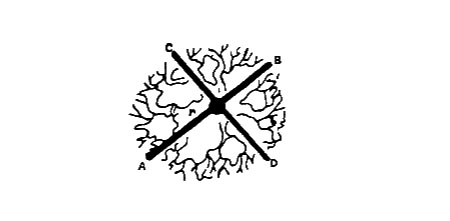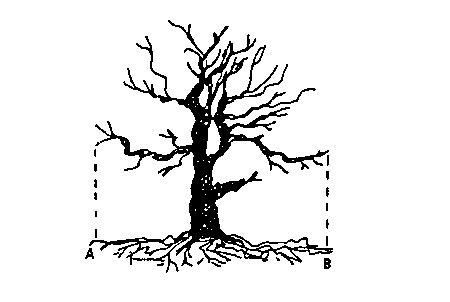Nominate
Champion Tree Program

Complete the form linked below to submit a nomination for the Wisconsin Champion Tree program.
Measuring a tree
You will need to provide measurements for trunk circumference, height and crown spread with your nomination.
Trunk Circumference
Grab a flexible tape measure and record the distance around the trunk of the tree to the nearest inch. This measurement should be taken at four and a half feet above ground level. Trees with multiple branches and bumps may require a slight adjustment. Take a look at the images below to learn how to measure these trees.
If the tree is growing on a slope, identify the middle of the tree's base and measure the trunk circumference at four and a half feet above that point.
If a branch is growing out of the trunk at chest height, measure the circumference just below the obstruction. Be sure to report the height at which the measurement was taken.
If you find a tree with multiple trunks, measure the circumference of the largest trunk at four and a half feet above ground level.
If a tree has multiple trunks that flare out near chest height, measure the skinniest part of the trunk below four and a half feet. Take note of the height at which the measurement was taken.
Height
You will need a 12-inch ruler. Hold the ruler vertically at eye level with an outstretched arm. Stand far enough away from the tree so that you can roughly see both the base and the top of the tree between the top and bottom of the ruler. Move forward or backward until the base of the tree (A) matches up with the 0-inch mark on the ruler (a) and the tip of the crown (B) matches with the 10-inch mark (b).
Recruit help from a friend with this next step. Find the point on the tree trunk that matches up with the 1-inch mark (c) on the ruler. Ask your friend to measure from the base of the tree (A) to this point (C), rounding to the nearest foot. Multiply this number by 10. This is the height of the tree (AB).
Note: You also are welcome to use instruments designed to measure height.

Crown Spread
Place a marker under the outside edge of the tree's crown that is farthest from the trunk (A) and another directly opposite it at the outer edge of the crown (B). Next, set a marker at the edge of the crown that is closest to the trunk (C) and another at the outer edge of the crown directly opposite it (D).

Use a tape measure to record the distance from A to B and the distance from C to D, rounding to the nearest foot. Add the two measurements together and divide the sum by two to obtain the average crown spread.

Identifying a tree
Wisconsin is home to many species of trees, including deciduous and coniferous trees. We have compiled a list of resources to help you identify trees in your community.
- PictureThis
A free mobile application that can identify more than 10,000 plant species. Simply upload a photo of a tree and let the application narrow down the search for you. - PlantSnap
Identify plants, mushrooms, succulents and cacti within seconds by uploading a photo to this mobile application. It uses a database that houses information about more than 600,000 plants. - iNaturalist
This mobile application helps you document trees and plants you find in the community. It also connects you with a community of experts who can help you identify those trees. - Tree Identification Key
The University of Wisconsin-Stevens Point published a tree identification key, which guides you through the process of identifying a tree. Print off a copy and take it with you on the go. - Winter Tree Identification Key
A tree's leaves can be a helpful tool for identifying species. When winter arrives and trees lose their leaves, we must look to other clues. The University of Wisconsin-Stevens Point created a guide for identifying trees during the winter.
